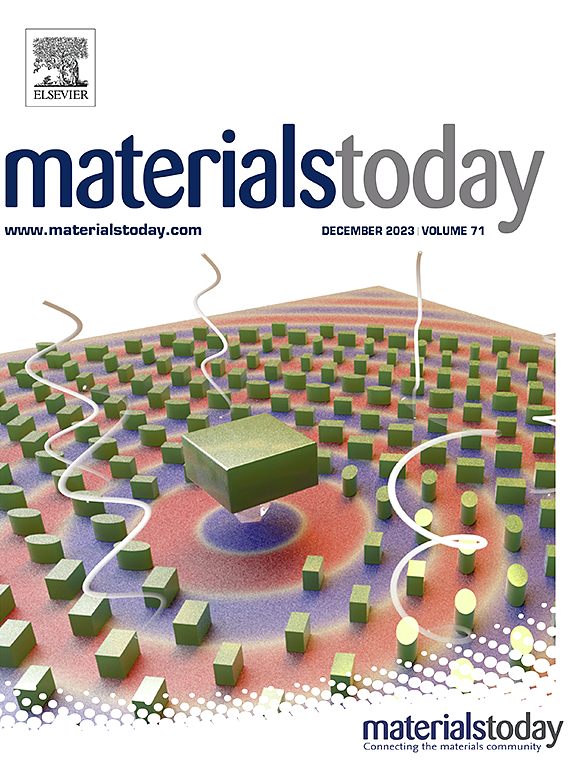可持续纳米纤维素基静电纺丝:为未来技术解锁先进材料
IF 22
1区 材料科学
Q1 MATERIALS SCIENCE, MULTIDISCIPLINARY
引用次数: 0
摘要
纳米纤维素是一种从天然纤维素中提取的可再生可持续材料,近年来受到材料科学领域的广泛关注。NC具有高机械强度、可生物降解性和可调节的表面化学性质,为设计多功能材料提供了新的可能性。当与静电纺丝相结合时,NC可以制造先进的纳米纤维系统,将环境可持续性与高性能相结合。这些纳米纤维在环境修复、生物医学、能源储存和智能包装等领域有着广阔的应用前景。本文综述了近年来利用数控技术设计静电纺纳米纤维的进展,强调了其独特的性能,包括尺寸和表面改性,如何影响纤维形态、界面相互作用和整体功能。新兴的静电纺丝策略和可扩展的技术用于生产坚固和多功能的纳米纤维。此外,该综述探讨了基于nc的静电纺丝的创新,通过提供传统材料的环保替代品,有助于可持续发展。最后,通过确定关键的研究差距和未来的方向,本文强调了基于nc的静电纺丝在推进下一代材料,促进可持续技术和增强广泛应用的功能性能方面的变革潜力。本文章由计算机程序翻译,如有差异,请以英文原文为准。

Sustainable nanocellulose-based electrospinning: Unlocking advanced materials for future technologies
Nanocellulose (NC), a renewable and sustainable material derived from natural cellulose, has attracted significant attention in materials science. With its high mechanical strength, biodegradability, and tunable surface chemistry, NC offers new possibilities for designing multifunctional materials. When combined with electrospinning, NC enables the fabrication of advanced nanofibrous systems that integrate environmental sustainability with high performance. These nanofibers hold great promise for various applications, including environmental remediation, biomedicine, energy storage, and intelligent packaging. This review summarizes recent advances in utilizing NC to engineer electrospun nanofibers, emphasizing how its unique properties, including size and surface modifications, affect fiber morphology, interfacial interactions, and overall functionality. Emerging electrospinning strategies and scalable techniques for producing robust and multifunctional NC-based nanofibers were critically evaluated. Additionally, the review explored the innovations in NC-based electrospinning contribute to sustainability by providing eco-friendly alternatives to conventional materials. Finally, by identifying key research gaps and future directions, this review underscores the transformative potential of NC-based electrospinning in advancing next-generation materials, fostering sustainable technologies, and enhancing functional performance for a wide range of applications.
求助全文
通过发布文献求助,成功后即可免费获取论文全文。
去求助
来源期刊

Materials Today
工程技术-材料科学:综合
CiteScore
36.30
自引率
1.20%
发文量
237
审稿时长
23 days
期刊介绍:
Materials Today is the leading journal in the Materials Today family, focusing on the latest and most impactful work in the materials science community. With a reputation for excellence in news and reviews, the journal has now expanded its coverage to include original research and aims to be at the forefront of the field.
We welcome comprehensive articles, short communications, and review articles from established leaders in the rapidly evolving fields of materials science and related disciplines. We strive to provide authors with rigorous peer review, fast publication, and maximum exposure for their work. While we only accept the most significant manuscripts, our speedy evaluation process ensures that there are no unnecessary publication delays.
 求助内容:
求助内容: 应助结果提醒方式:
应助结果提醒方式:


